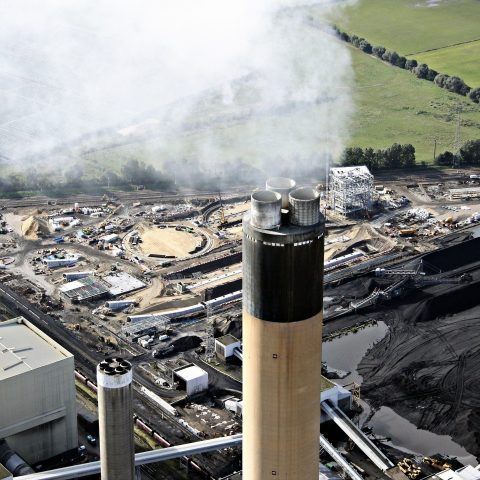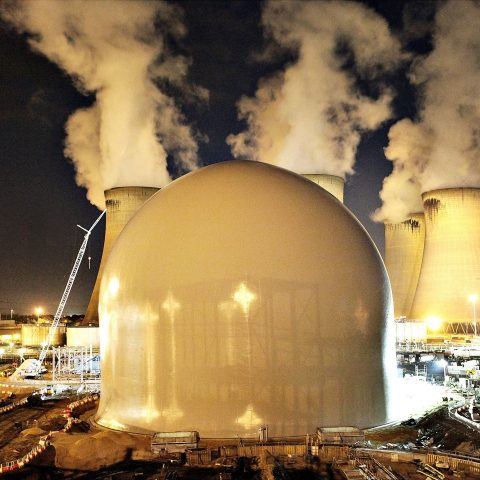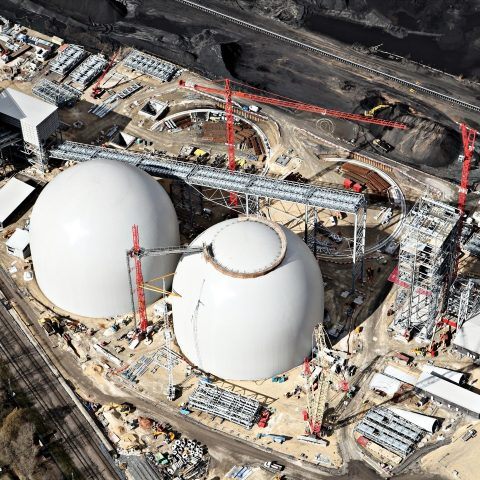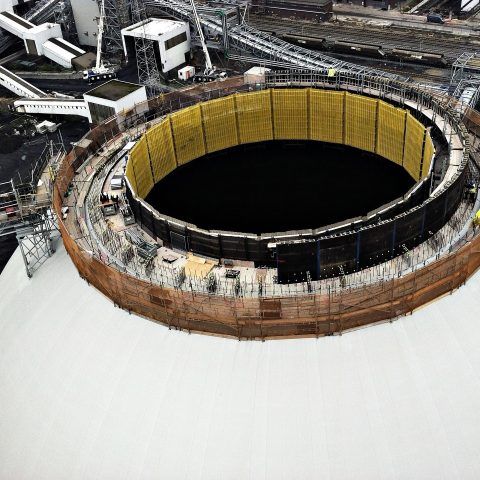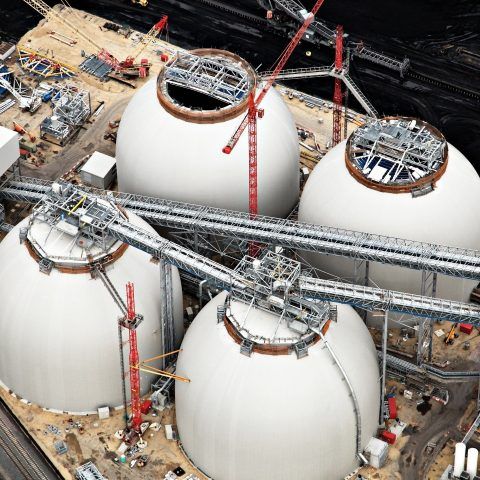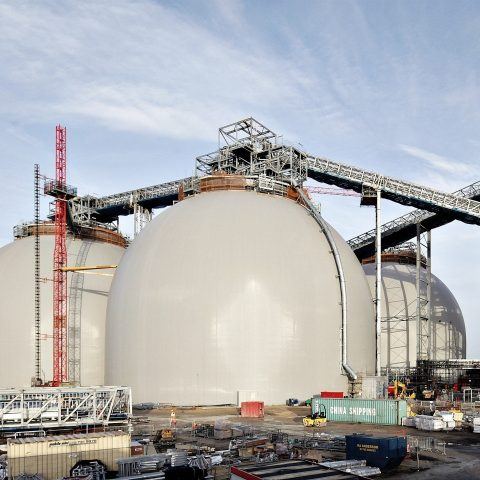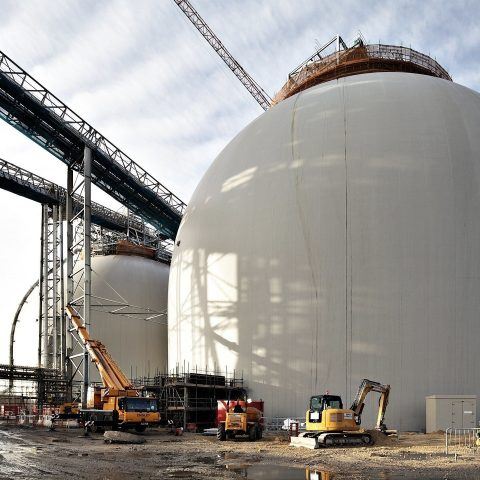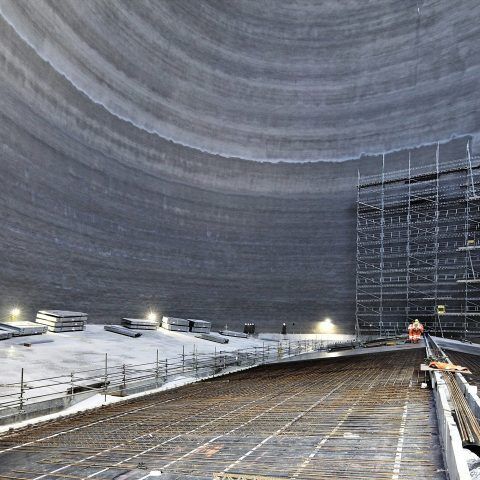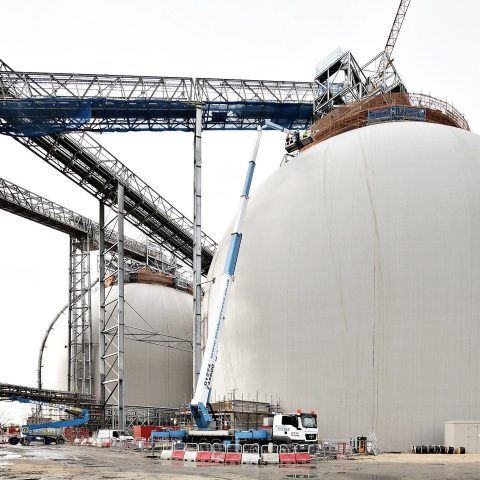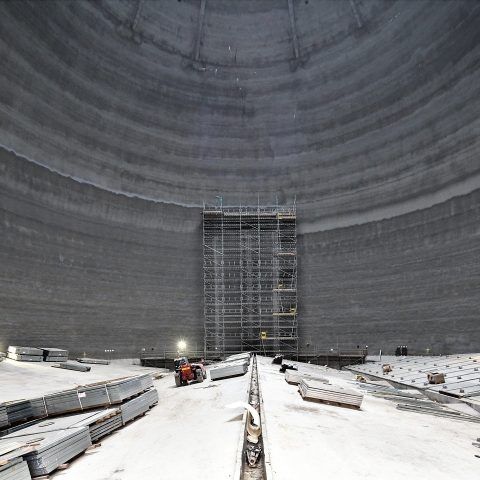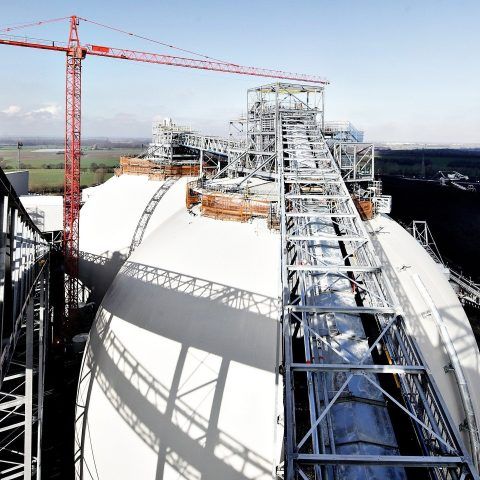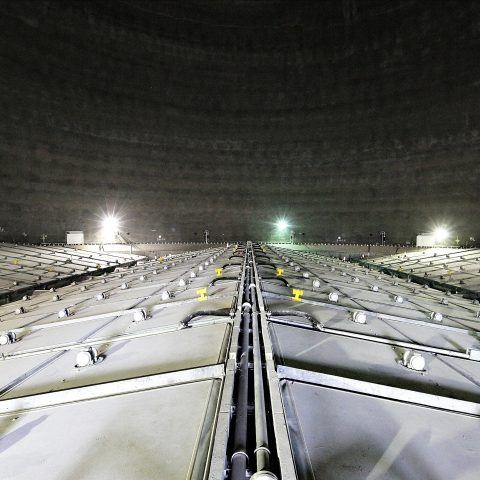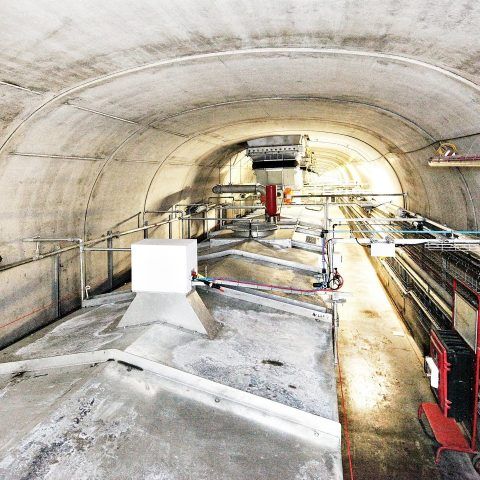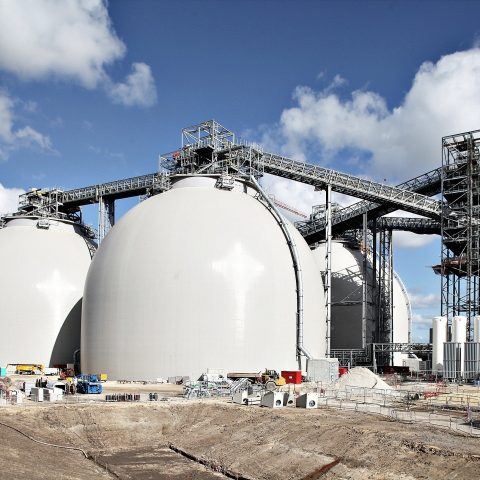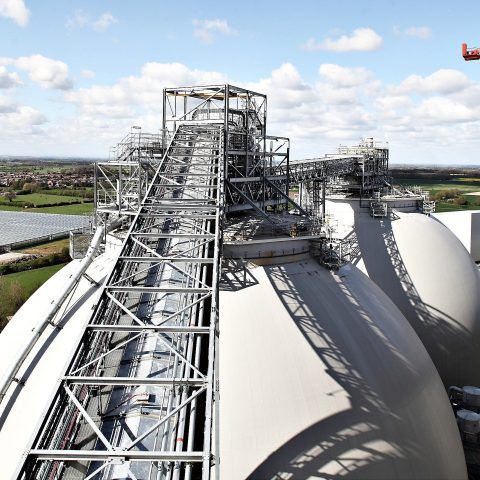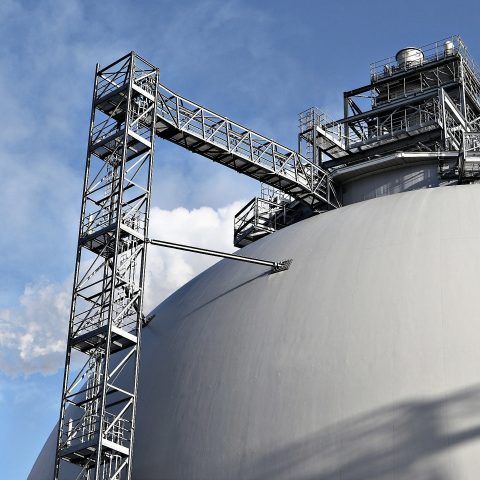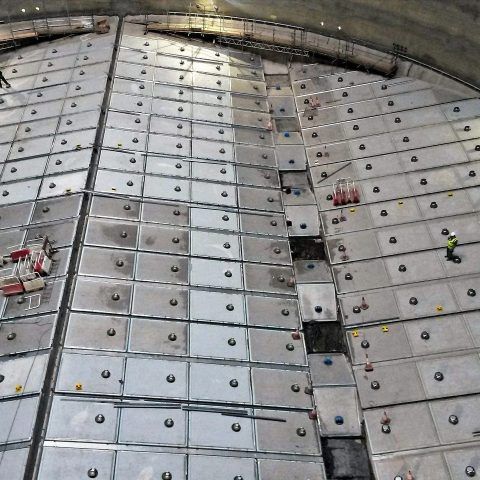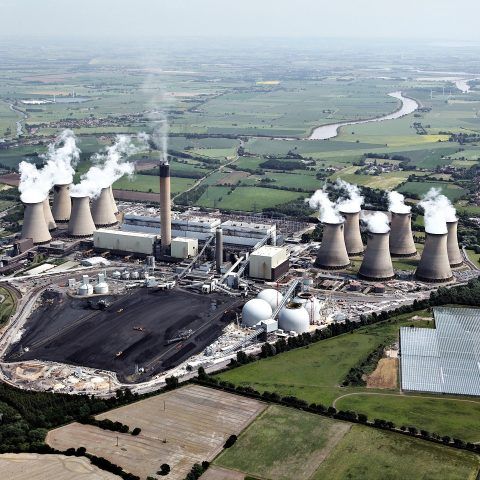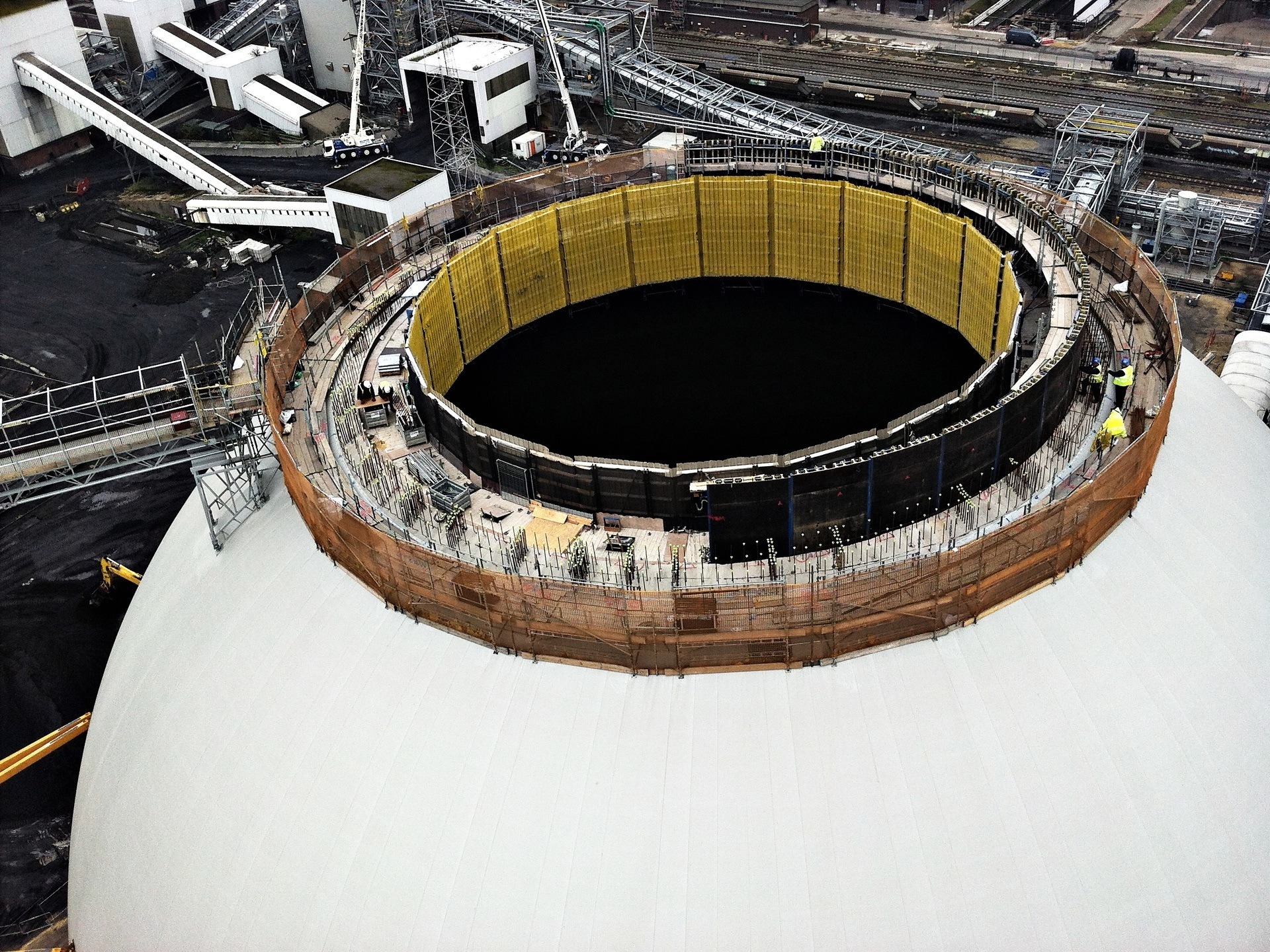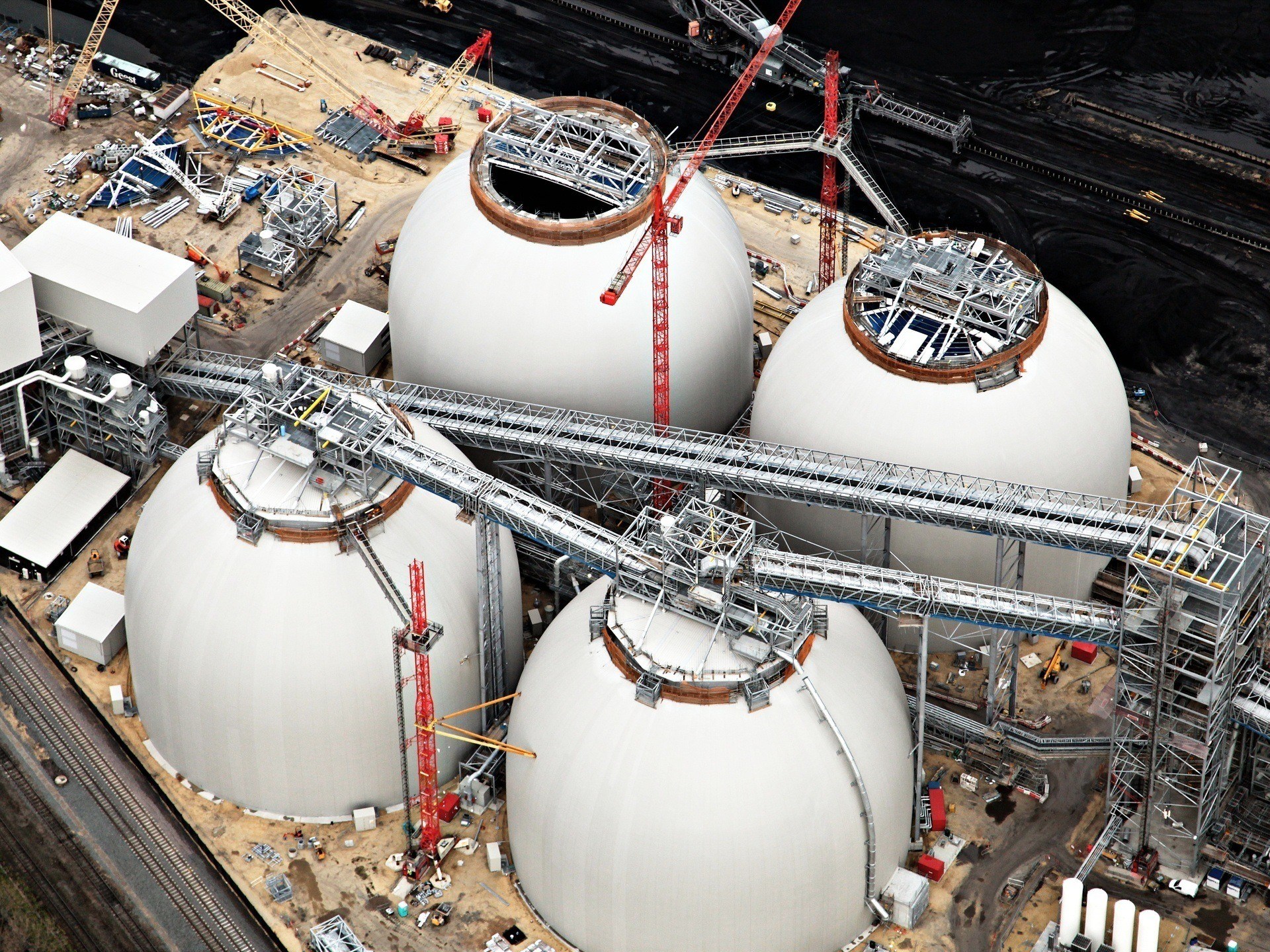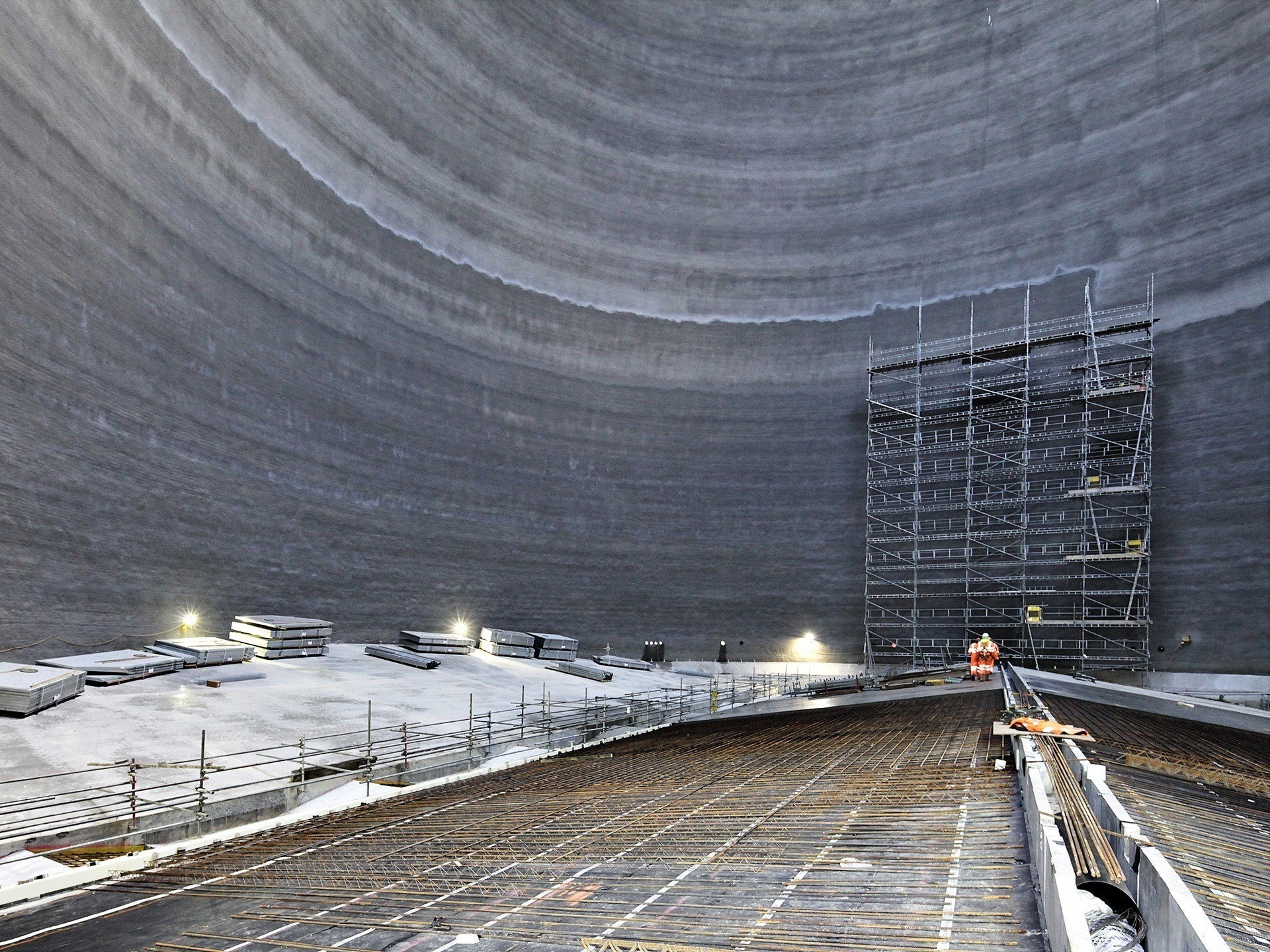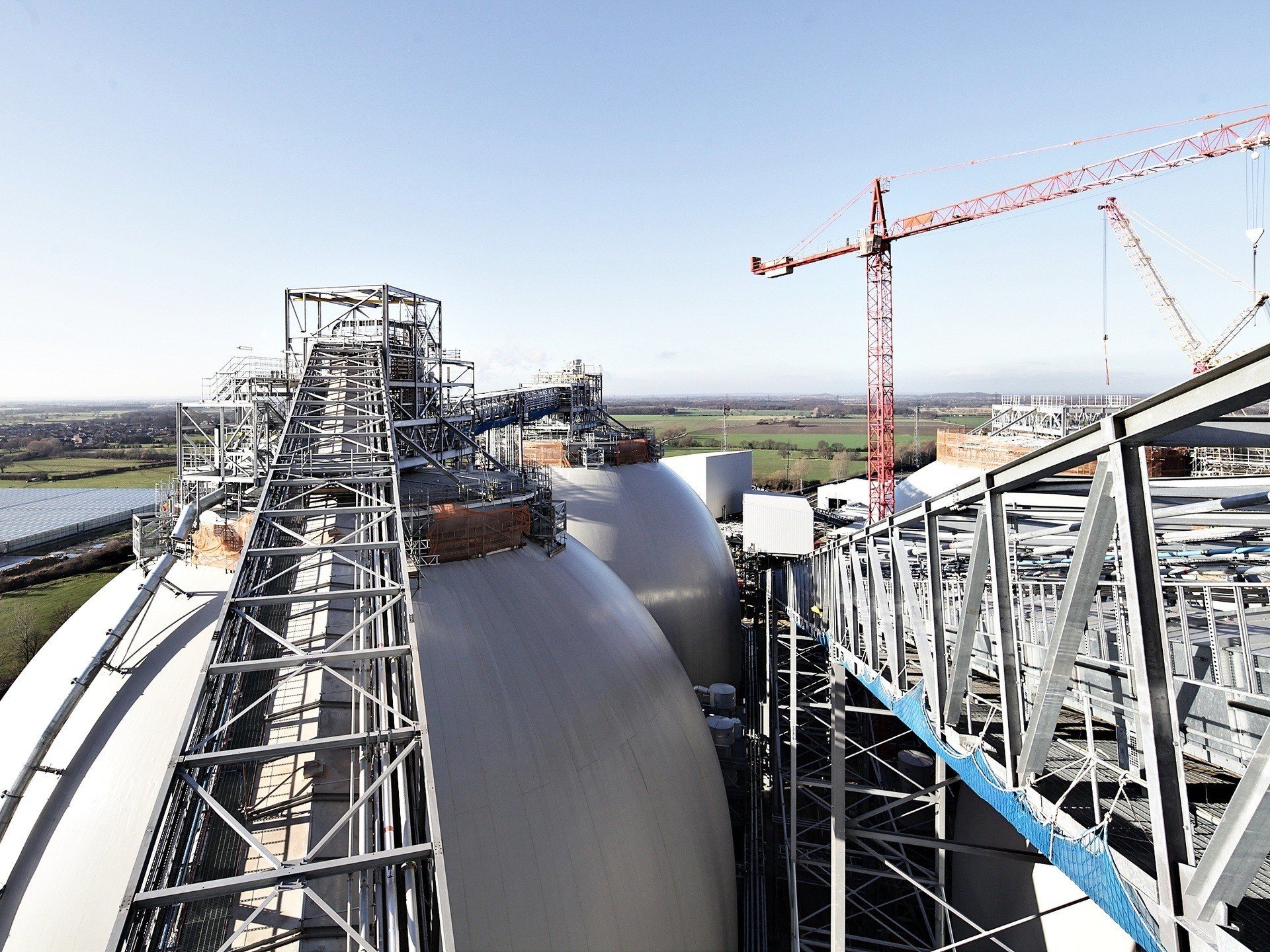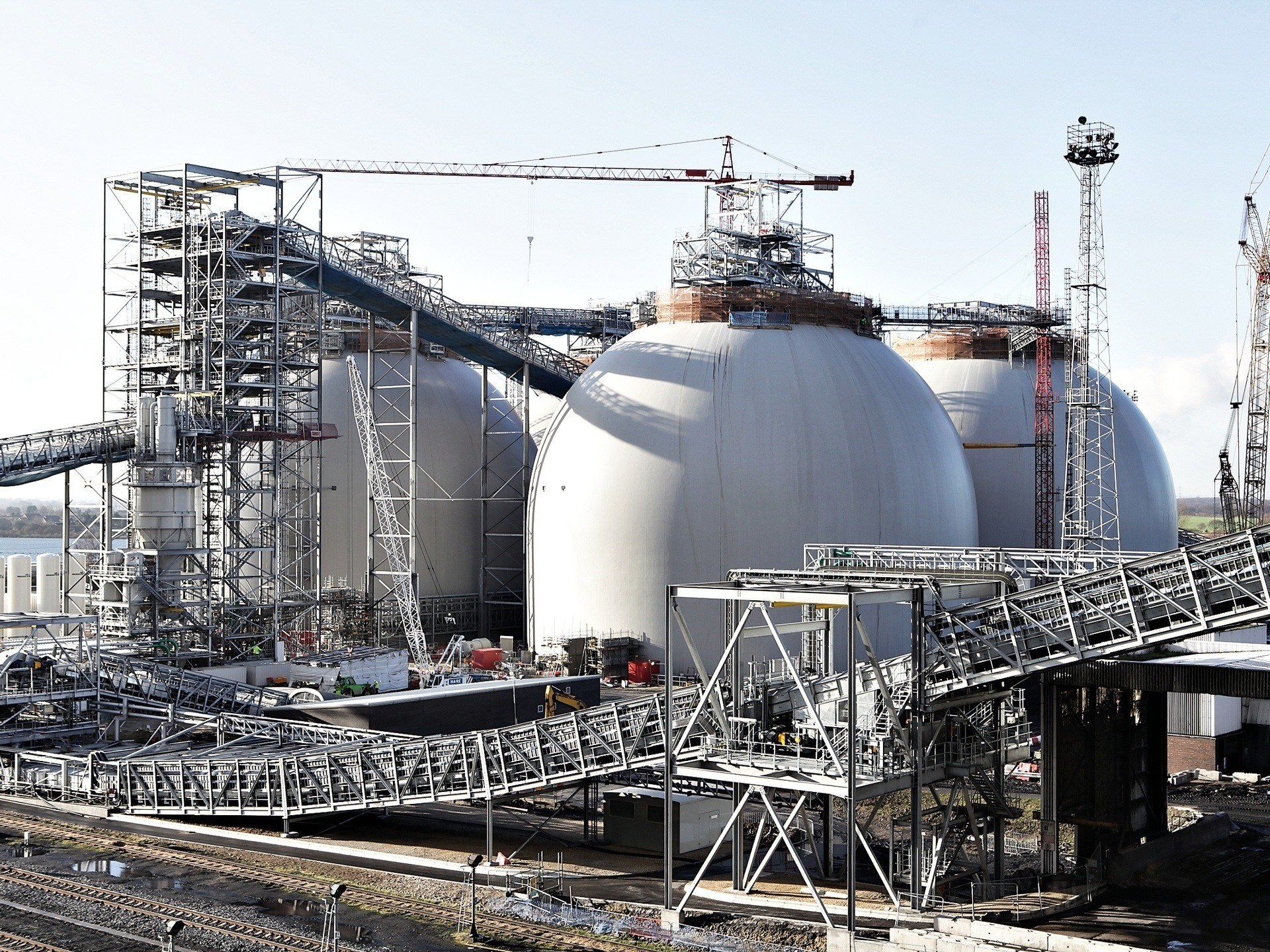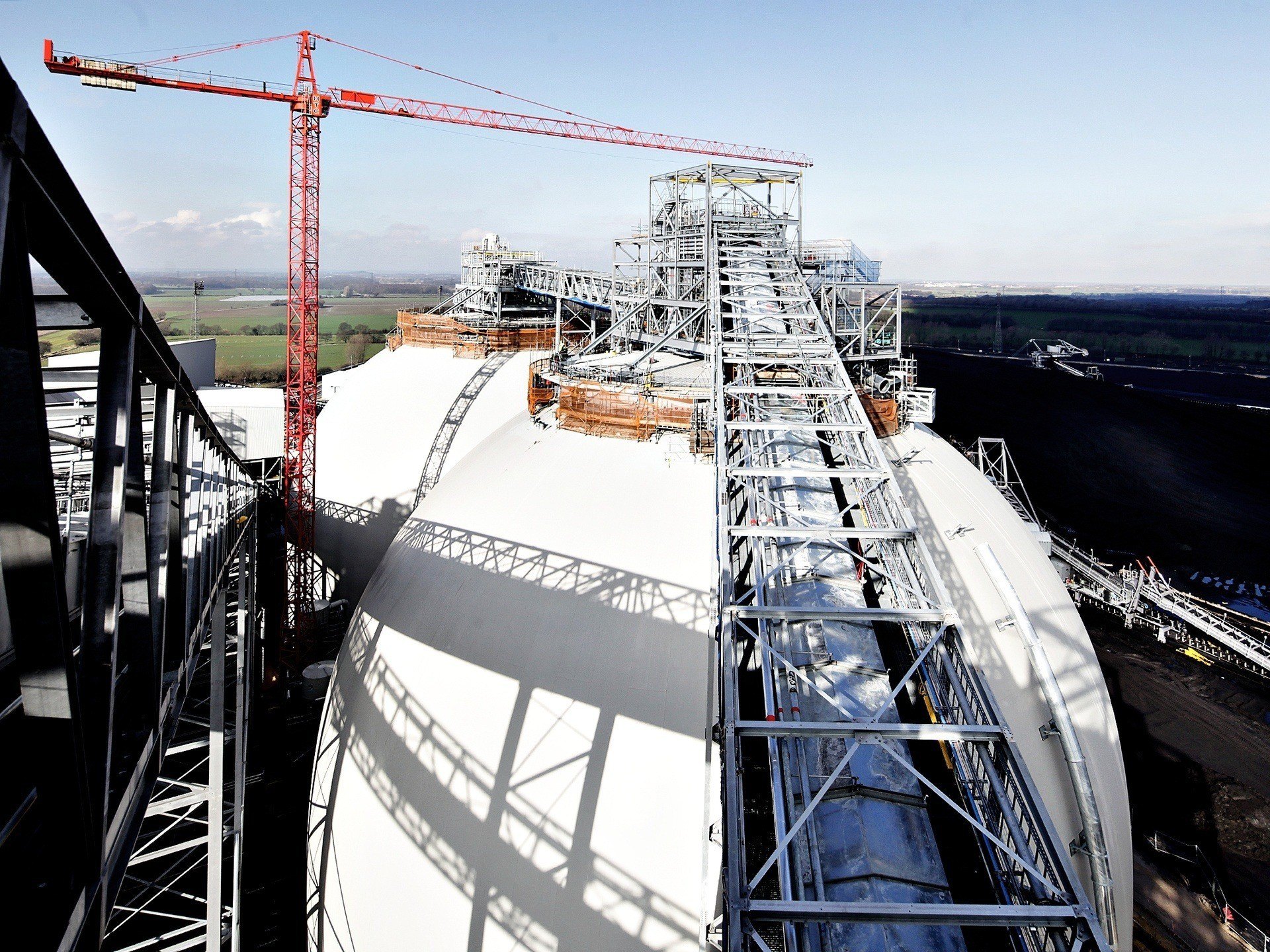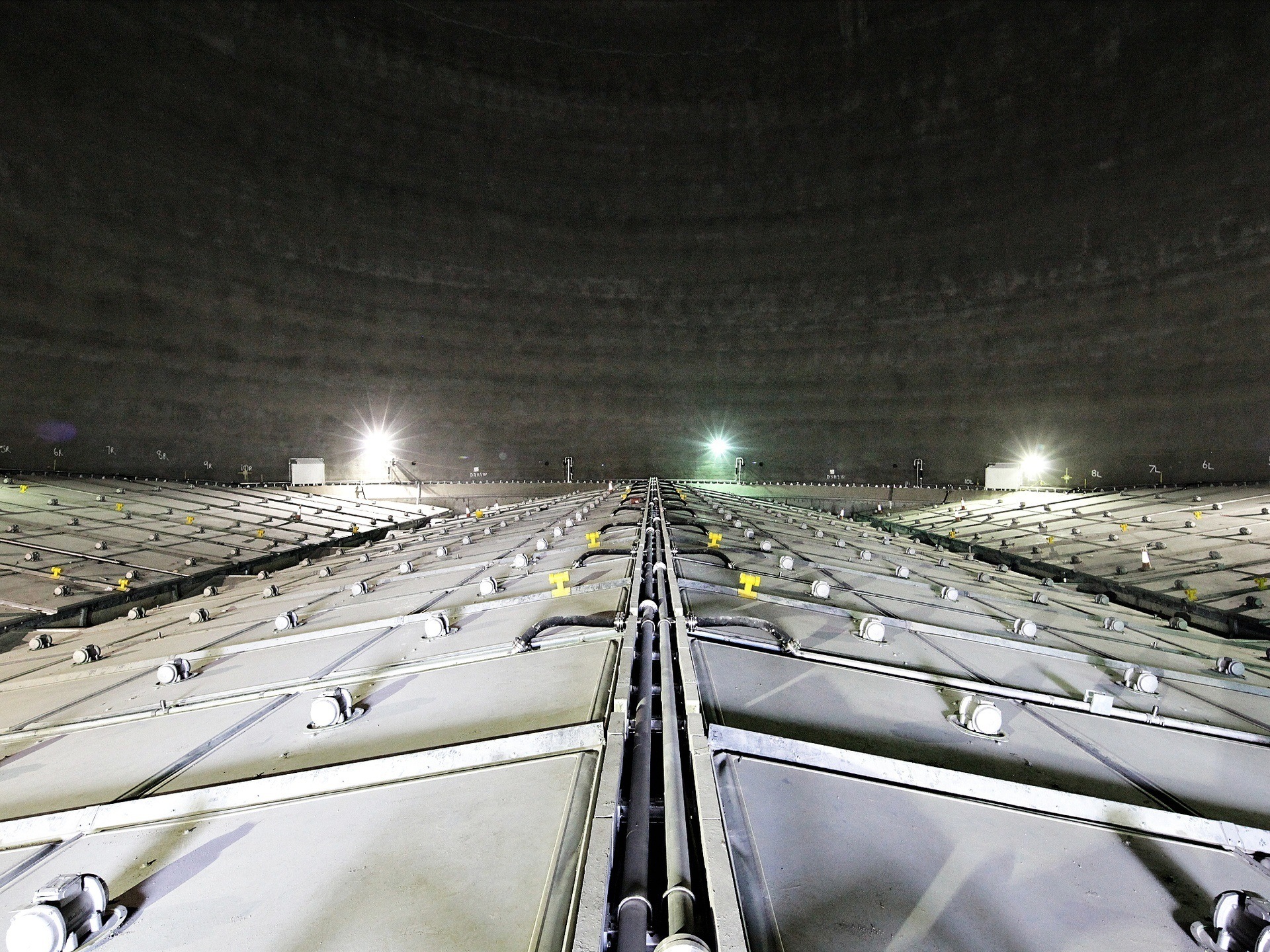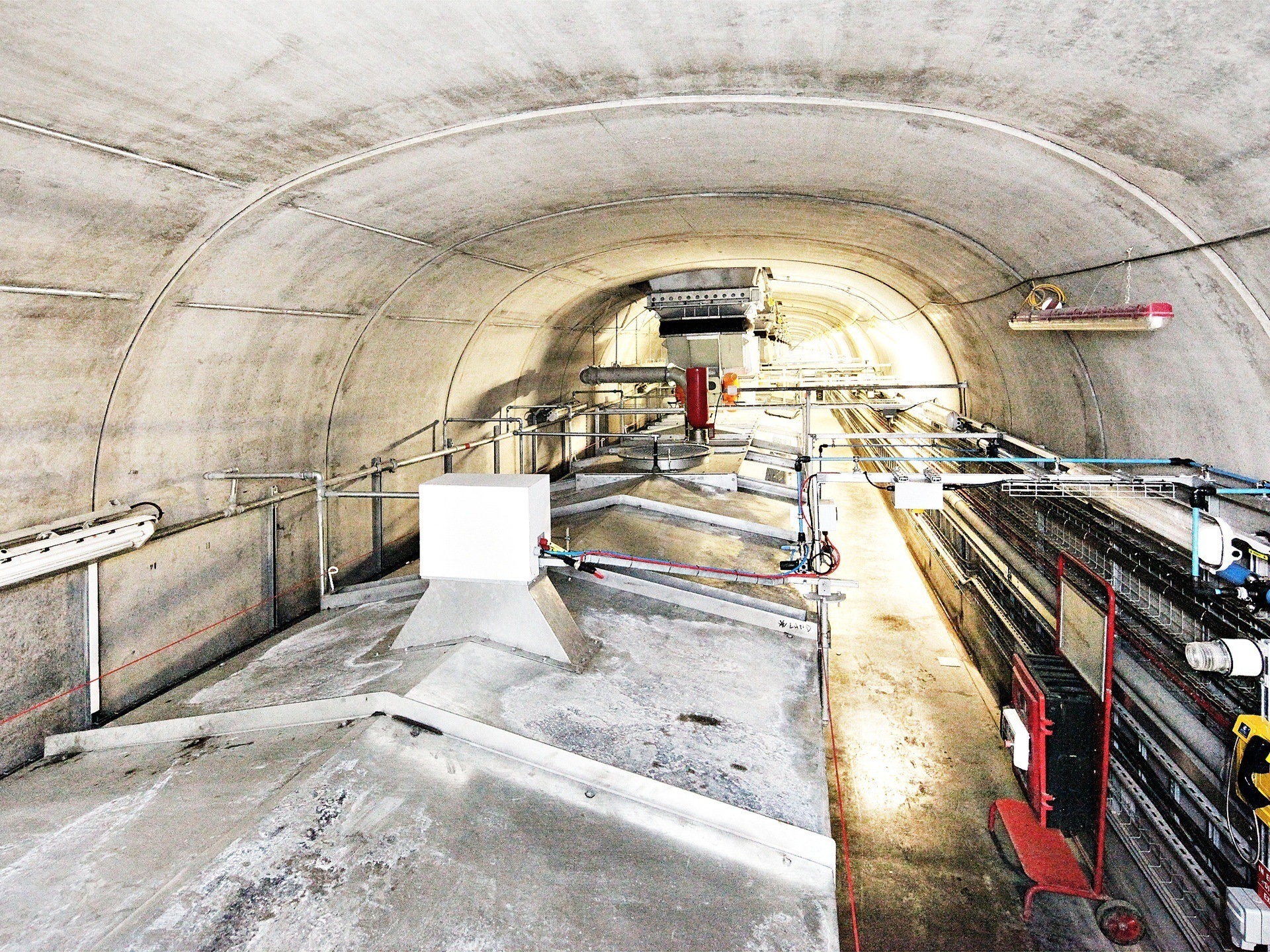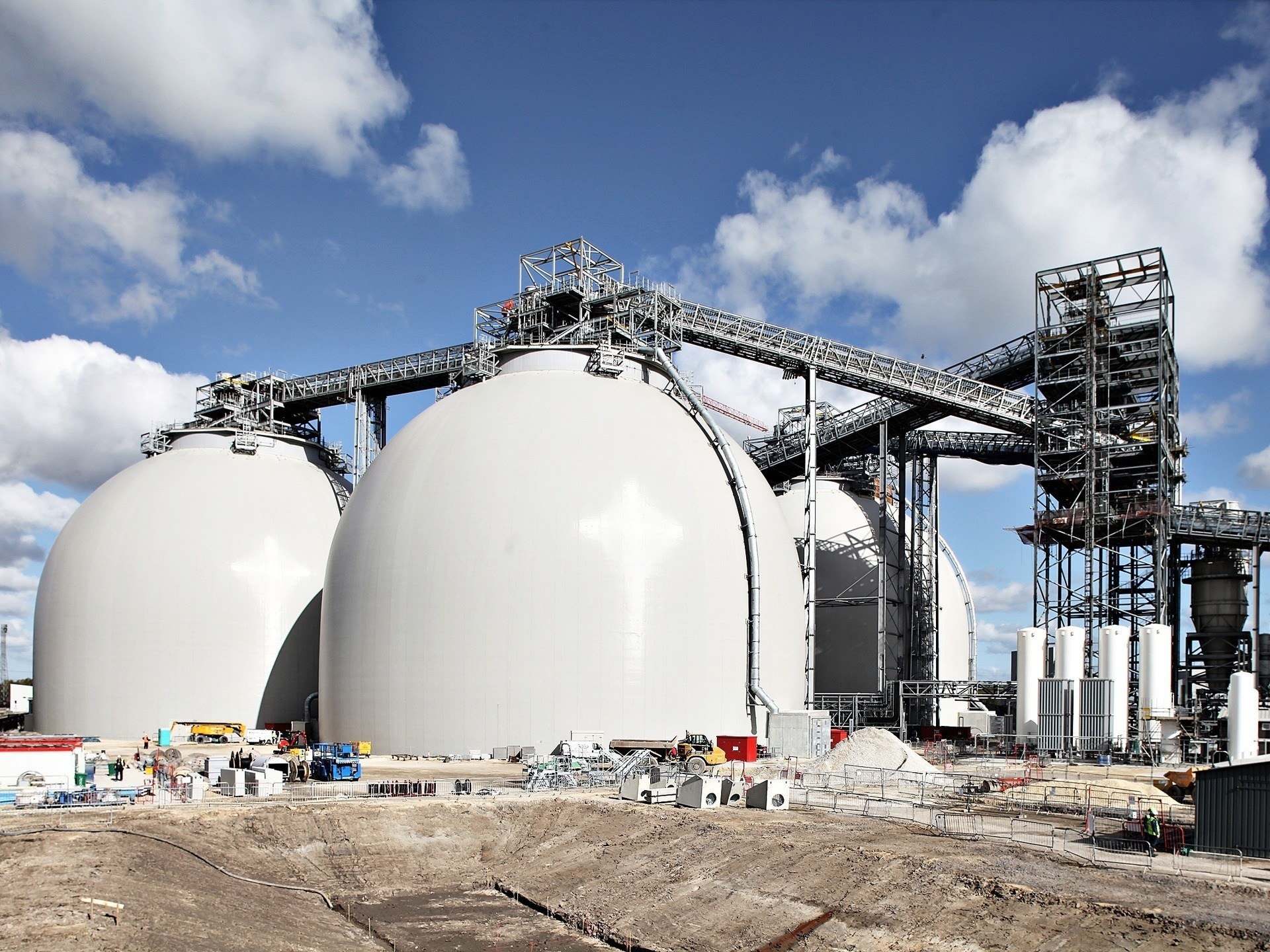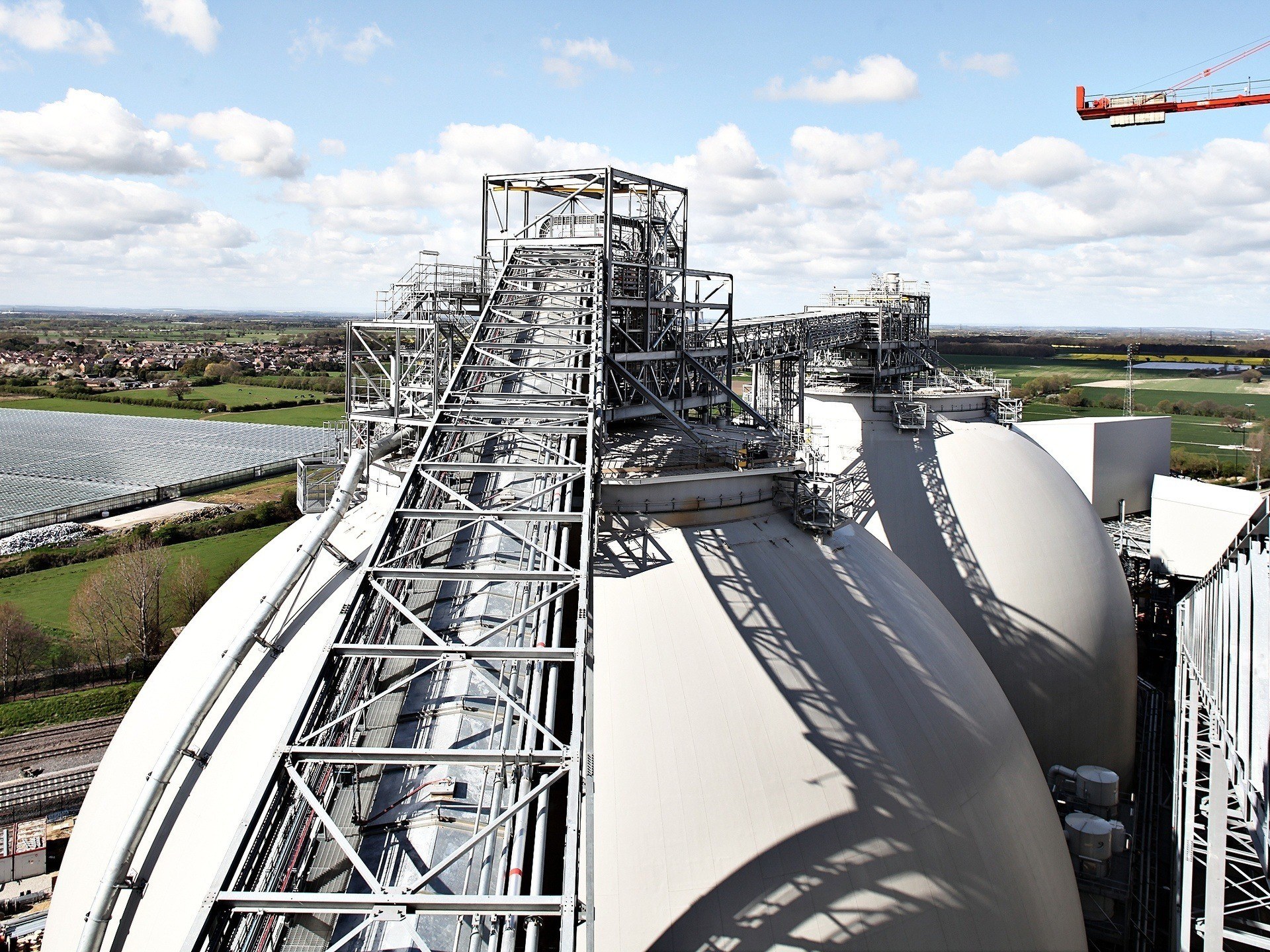Scope of Work
| Domes | Height | Diameter | Capacity |
|---|---|---|---|
| #534 | 164.9ft | 206.7ft | 88,000t |
| #534 | 50.3m | 63.0m | 88,000t |
| #535 | 164.9ft | 206.7ft | 88,000t |
| #535 | 50.3m | 63.0m | 88,000t |
| #536 | 164.9ft | 206.7ft | 88,000t |
| #536 | 50.3m | 63.0m | 88,000t |
| #537 | 164.9ft | 206.7ft | 88,000t |
| #537 | 50.3m | 63.0m | 88,000t |
UK generator Drax sets record for largest project in Dome Technology history
There’s big, and then there’s staggering.
Drax chose the latter in a project that was a first of its kind for the United Kingdom, Europe’s single largest decarbonisation project and Dome Technology’s largest project to date.
This project required an open-minded, innovative, and technically specialized solution to deliver a safe and reliable operation. The size and scale of the project requires unprecedented biomass storage, essentially four domes each holding 80,000 metric tons of biomass.
After an intensive period of research, taking into account speed of construction, suitability for containing the material, methods of extraction, overall cost, and ability to meet legislation requirements, the domes provided the best overall solution at the time. Dome Technology was the recognized market leader for this technology. The company hired several design companies and civil contractors to bring the overall design together, led by Shepherd Construction. Dome Technology’s team was responsible for the overall design of the dome system, including reclaim tunnels, floor slabs, upper and lower ring beams, dome shells, and waterproofing.
“Dome Technology had to work closely with several other design companies and civil contractors to bring the overall design together and underwrite the overall design,” said Drax’s strategic project engineering manager Jason Shipstone. “This was not an easy task and needed to be done quickly, and whilst this wasn’t always an entirely smooth process, the end result was a fully integrated design which works as it should.”
According to Dome Technology sales manager Lane Roberts, domes were a new storage solution for Drax, who had previously chosen flat storage and silos. “The domes were more economical (and) have a smaller footprint than other technologies and a quicker build process,” he said.
One important feature was the unique “tops” for the domes. The specialised design incorporates a 90-foot opening at the apex of each dome accommodating panels, which relieve and dissipate pressure should it arise. Using mathematical models the team calculated the needed surface area of relief and where it needed to be placed to meet ATEX and DSEAR requirements, and this dictated the size of the opening in the roof. A stiffening structure was used to spread the load of the head house, which sits between the relief panels, evenly down into the dome shell.
This custom feature was also designed to be completely weatherproof, as biomass storage demands, and “to be as close to gas-tight as possible—we don’t want oxygen being drawn in, nor do we want our inert gas atmosphere within the dome escaping,” Shipstone said.
With the four domes now in operation, Drax is providing enough power to meet around seven to eight percent of the United Kingdom’s electricity needs, half of which is being generated via biomass. Even with the difficulties of working in different time zones, Dome Technology ensured that the project had the technical information and support it needed when it needed it.
“Dome Technology were keen and interested from day one, had experience with biomass and other similar products from previous projects, and had over 75 reference projects worldwide,” Shipstone said. “One or two little details were a little close to the wire in terms of timing, and like all large projects, we had our surprises, but overall the whole team worked well together and delivered a very effective project.”
